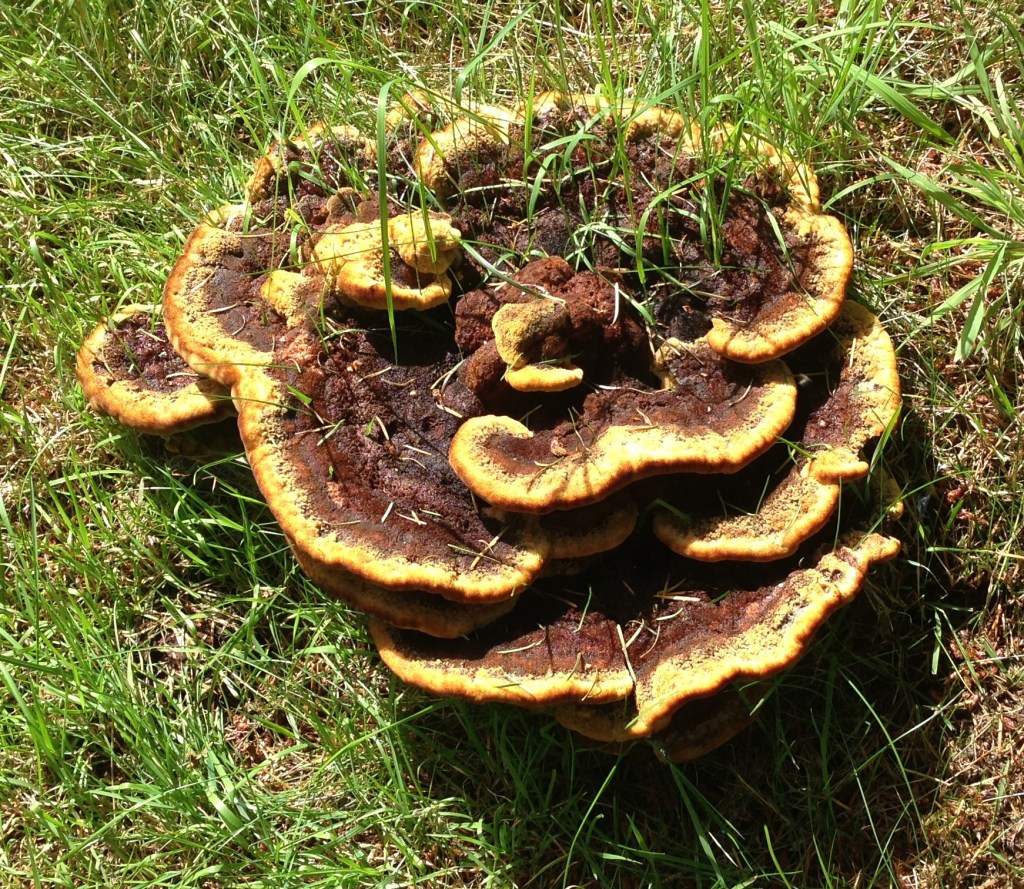
One of my favourite places in the world, is the magical Lake of Menteith in Scotland. Home to the historic Inchmahome Priory, the island of Inchmahome is accessible only by a tiny boat. The priory was founded in 1238 and now lies in romantic ruins, steeped in history yet there is a sense of seclusion, peace and purity that surrounds the aura of the island. That’s how I remember it when we visited when I was a child and when I accidentally came upon the area again, 5 years ago, I had to see if it had the same affect. I’m happy to say, it still holds the same peace and magic.

Full of nature, fungus thrives on the island, from our quick visit, we found several interesting finds. One of which was a few of these specimens, which I belive to be Dyer’s mazegill, Phaeolus schweinitzii. The fuiting body was around 30cm across, with a thick margin, in rosettes popping up form the ground. These are known to be parasitic on coniferous trees and their roots, I’m not sure if there were some roots nearby unseen. I wish I’d paid more attention!

Micheal Jordan’s Encyclopedia of Fungi of Britain and Europe describes the Phaeolus schweinitzii as having fan or fused cushions, which is true to these spongy, velvety cones. Unfortunately, I didn’t look at the pores, though I wish I had, as the pores form a maze-like pattern and the tubes attach to the stem.
These were delightfully huge and felt like they were from another world on the secluded beautiful island. A fun find.
Cate2, run by the Fungus Conservation Trust has 1799 records of this species, the first being recorded in June 1899 in the New Forest and the latest being recorded from December 2021 in Glenbranter in Argyllshire. The records are distributed fairly evenly over the mainland of Britain and the Isle of Man.
Basic Profile
Scientific name: Phaeolus schweinitzii
Common names: Dyer’s mazegill (due to its historic use in dying yarn) / Velvet top fungus / Dyer’s polypore
Size of fruiting body: up to 30cm in diameter
Spores: Ellipsoidal to ovoid, smooth, 5-7 x 3.5-5µm
Gills: Pores, brown with age
Edibility: Inedible
Lookalikes: Laetiporus sulphurus
On the Red Data List (extinct/critically endangered/endangered/vulnerable/near threatened): No
References:
Cate2 Database, managed and maintained by The Fungus Conservation Trust
National Biodiversity Data Centre
Red Data List, British Mycological Society
http://iucn.ekoo.se/, The Global Fungal Red List Initiative
Collins Complete Guide to British Mushrooms & Toadstools, Paul Sterry & Barry Hughes, 2009
Entangled Life: How Fungi Make Our Worlds, Change our Minds and Shape Our Futures, Merlin Sheldrake, 2020
Mushrooms and Toadstools of Britain and Europe, Edmund Garnweidner, 1994
Mushrooms, Patrick Hardy, 2013
The Encyclopedia of Fungi of Britain and Europe, Michael Jordan, 2004

